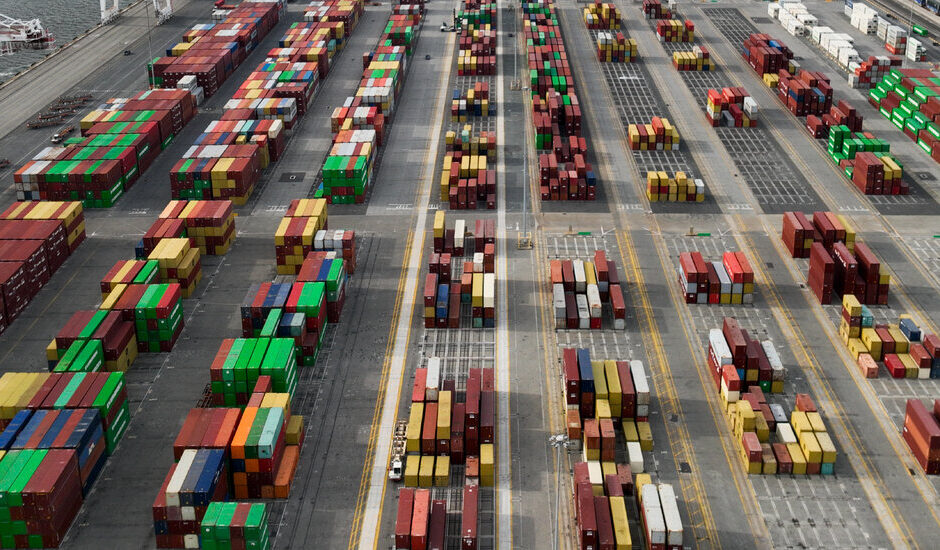President Trump is set to unveil his most expansive tariffs to date on Wednesday afternoon, when he will detail potentially punishing levies on countries around the globe, including America’s largest trading partners.
Mr. Trump has promised for months to impose what he calls “reciprocal” tariffs, which the president says will correct years of “unfair” trade in which other countries have been “ripping off” America.
“We helped everybody, and they don’t help us,” Mr. Trump said on Monday.
Exactly how he plans to structure the new tariffs is not yet clear. The White House press secretary said Tuesday afternoon that Mr. Trump had decided on a course of action and that the new tariffs would go into effect immediately, but that he and his trade advisers were continuing to hash out details.
The president has talked about basing a new tariff rate for countries on the tariffs they place on American products, as well as other trading practices that the Trump team deems unfair.
Mr. Trump has also considered a flat 20 percent tariff on all trading partners. Such a levy would be aimed more at generating revenue to offset the tax cuts that he hopes to push through Congress.
Either approach would be a significant escalation toward a trade war that Mr. Trump seems eager to unleash. Governments across the world have been preparing to hit back if the president raises tariffs, raising the potential for a destabilizing economic battle that drives up costs as Mr. Trump tries to force supply chains back to the United States.
The president has largely dismissed concerns that his tariffs — essentially a tax on imports — could raise prices for American consumers and businesses or prompt retaliation that would hurt farmers and other exporters.
Mr. Trump has already imposed several major tranches of tariffs, including ones that apply broadly to imports from China, Canada and Mexico. He has also announced tariffs on imported cars and car parts, which are set to go into effect on Thursday.
The Canadian and Chinese governments have already retaliated against Mr. Trump’s tariffs with levies of their own. Governments in Europe, in Mexico and elsewhere have said they are waiting to see Wednesday’s measures before announcing their own responses. European officials have discussed placing trade barriers on services, using a trade weapon that was developed in 2021. That tool could allow Europe to impose restrictions or penalties on companies like Google, Meta or even American banks.
Mr. Trump is scheduled to announce his tariff moves at 4 p.m. in a ceremony in the White House Rose Garden. On Tuesday, Karoline Leavitt, the White House press secretary, said the tariffs would snap into effect immediately.
“We are focused on restoring the golden age of America and making America a manufacturing superpower,” Ms. Leavitt said.
Mr. Trump argues that tariffs will encourage companies to move factories into the United States, and he has hailed investment announcements from chipmakers, car manufacturers and others.
But economists say that since tariffs raise prices for imported products and manufacturing inputs, they can slow the economy. The prospect of tariffs has stoked turmoil in stock markets and among major companies, which often depend on international supply chains for parts and products.
Trump administration officials have also insisted that foreign companies will pay the cost of the tariffs for the privilege of selling into the American market, but both economists and industry executives say importers are likely to pass some of the tariff cost on to consumers instead.
Analysts at Goldman Sachs said in a recent note that expectations of higher tariffs had caused them to lift their year-end inflation forecast, lower their economic growth projections for 2025 and raise their expectations for unemployment this year.
They now put the probability of a recession in the next 12 months at 35 percent, up from 20 percent, they said. The change, they added, reflected “our lower growth base line, the sharp recent deterioration in household and business confidence, and statements from White House officials indicating greater willingness to tolerate near-term economic weakness in pursuit of their policies.”
Satyam Panday, the chief U.S. and Canada economist for S&P Global Ratings, said, “If manufacturers have to be paying more for their input, we are most likely going to see prices on the output also increase.” He added that was “inflationary pressure building.”
Many industries have also been pushing back against the tariff plans. Michael Hanson, a senior executive vice president at the Retail Industry Leaders Association, which represents major retailers, said in a statement on Tuesday that Americans were “counting on President Trump to help make life more affordable.”
Americans are “nervous about the impact tariffs will have on their pocketbooks,” he said. “Retailers strongly urge the president to double down on the policies from his first term that are working and forgo policies that create uncertainty for American businesses and families.”
Mr. Trump and his supporters have acknowledged that there could be some pain for the economy and consumers as global supply chains reorganize. Senator John Kennedy, a Republican from Louisiana, said Tuesday that he understood what Mr. Trump was trying to accomplish in using tariffs as a cudgel to bring manufacturing jobs and investment back to the United States. That, he said, would be a “net positive” in the long term.
“The short-run matters, too,” Mr. Kennedy added during an interview on Fox Business. “I mean, it just does. And anybody that tells you that they know what the short-term impact of these tariffs is going to be on the economy has been home-schooled by a day drinker. They’re making it up. They just don’t know, because we’ve never seen tariffs in modern history to this extent.”
Tony Romm contributed reporting
#Trump #Set #Unveil #Expansive #Global #Tariffs


